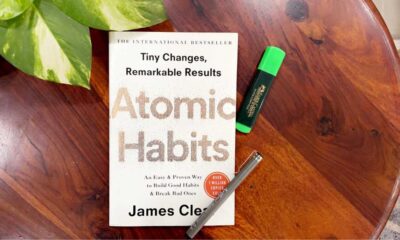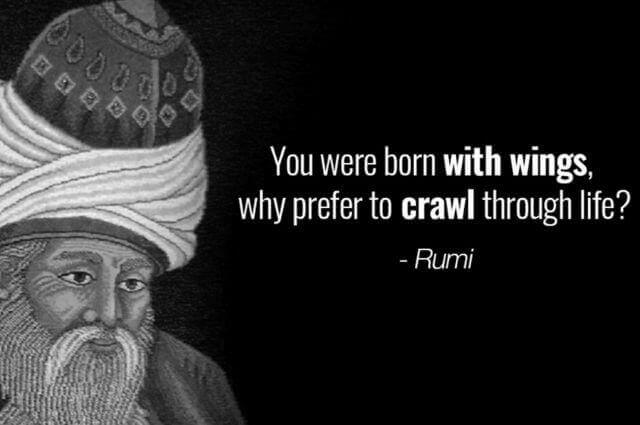Mental Health
How To Make Peace With Your Inner Voice

To start changing your mind, think of yourself as a character and ask yourself some questions to make peace with your inner voice and step towards happiness.
What is the key to happiness? It’s the question we’ve all wondered.
We’ve heard the familiar precepts:
“There is no greater gift than the present.”
“Have an attitude of gratitude.”
“It’s not what you look at that matters, it’s what you see.”
Easier said than done, right?
Especially when you have to repeatedly fend off thoughts that try to sabotage such a positive outlook. Our minds seem to cling to less optimistic tropes, a method of self-preservation—an innate survival tactic.
“Better safe than sorry.”
“Prepare for the worst, hope for the best.”
“Better to be pleasantly surprised than disappointed.”
Aww—yes, those sit much more comfortably. They don’t carry expectations or set a standard that will leave us vulnerable or disappointed. If we devalue possibility, we will cope better when all goes awry.
Messages of self-doubt and fear seem to slide freely and easily through our neuro pathways, channels that have been chiseled by the regular wear and tear of our internal monologue—our inner voice.
Voice is a way of thinking. And my inner voice is a real you know what. I’m willing to bet that I’m not alone. My voice can often sound like the mean girl from every 1990s movie montage. You know Her. She’s the one that says you’re not good enough, not pretty enough, and that those pants make you look . . . well, swollen.
She pushes and pulls at your desperate attempts to deviate from Her hostile take-over. She throws punches at every move, the ones you take and even the ones you don’t.
My thoughts are twisted knots with dead ends. And why does it seem easier to manifest the bad over the good? How is it that I repeatedly find myself at the wrong place, the wrong time, and unquestionably the wrong line?
So how do we begin to retrain our thought life to speak healthier, kinder words? I am no neurologist, nor do I claim to be an expert in any field of psychology.
But I have over forty years of experience with my own stinkin’ thinking and at least half that time trying to change it. Sometimes you have to rescue your own thought path.
Every morning, when the moon is still high and only the dog is stirring, I set aside time to get my head right. It’s a window when I can choose what to put in my mind before the day unleashes its own agenda.
I kick into gear with some healthy exercise: running, biking, ellipticalling while listening to my favorite songs, an inspirational podcast, or an audiobook. Saintly, right?
Wrong.
I realize what I was doing with my morning habits, what I am doing, isn’t working because I’m not listening. What I’m doing is trying to drown Her out—my mean girl inner voice—by pouring wisdom in.
I will do just about anything to avoid being alone with Her. Anything over silence. Because in silence, the inner voice has the microphone. And she’s dead-set on destroying me.
We are constantly downloading information, our brains in a perpetual state of buffering. This could be bad . . . This could be bad . . .
But it could be better—if you clear the cache. There are unexpected epiphanies in brutally honest reflection. So perhaps we need to let Her in.
Make peace with our inner voice by befriending Her. Our brains are built to avoid pain. Our biological instinct to survive. Which is what makes Her sound so mean. She thinks she’s protecting you from the worst case scenario when in fact it’s manifesting it. How can you be happy in a constant state of internal struggle—stuck in a loop of doubts and fears?
They say happiness is a choice. But it’s a choice about how you think. The key to happiness—the message that all the sayings share—is that happiness comes from having peace of mind. So you’ll have to make nice with Her first.
Stories have always been intriguing to me because they offer a glimpse into the secret thought life of characters. They say—I trust you with my crazy. And, if it is a good story, we feel connected—like we aren’t alone in our destructive ways of thinking.
Whether or not the narrator is reliable, you get to see their uncensored internal dialogue—the way someone else sees the world through the intimate lens of their secret thought life.
To start changing your mind, I’m suggesting a literary approach: think of yourself as a character. If you are the narrator, then you can change the narrative.
Questions to help you start making peace with your inner voice:
1. Are you listening?
Characters have a keen awareness of their thoughts, good or bad. And you can’t change something, unless you know it’s there. Begin building an awareness and listen to what your voice may be trying to tell you.
2. What do you want?
For characters, motivations guide movement. Your voice can act as a method of manipulation to get what you want when things aren’t going the way you want. Know your motivation and you’ll have a better understanding of negative self-talk (guilt trips, condescending, self-deprecation, fear, etc.).
3. Who does the thought belong to?
We begin to understand a character’s behavior through their backstory. Who and what has shaped the way they see the world?
Consider who’s voice may be sneaking into your narrative. In order to connect with who you were made to be, you first have to undo who you were taught to be. What words belong to you versus inherited from someone else? Truth is relative.
4. Have you tried to change your perspective?
Play with point of view (POV). We typically think in the first person (I/Me). You can create space between yourself and the situation. Looking at your thoughts from a third person (he/she) objective perspective allows you to act as an observer to see how all the pieces work together.
5. If you said your thoughts out loud, what would it reveal about you?
Dialogue in stories reveals a person and what is going on inside them (not just happening to them). Does what you think match what you say?
6. Play the “what’s going to happen next game?”
Force yourself to move past a thought and into a hypothetical future. Turn the page to a scene that could go a number of ways (not all bad), and you will be more likely to press onward with an open mind. The mind is a muscle, whatever you train your brain to focus on, it will find.
7. Are you in the right setting?
Input is output. Consider the people in your ear. Even those who love you most can unintentionally manipulate the way you think. The setting can also be an external force that influences your thoughts. You may need to change your environment.
8. What does your body language say?
Maintain an awareness of your gestures and body language. Your body has a voice too, and sometimes it’s more honest than your brain.
9. What would a happy ending look like?
Imagine you’re in the last chapter of a novel and you’re about to finally understand everything. How would that change your internal dialogue? You may not know what your thoughts are truly about until it’s over, like the theme of a book is sometimes unclear until you reach “the end.”
A character’s flaws gets a reader on their side, even when they themselves are not on their own side. It’s time you get on your own side.
-

 Lifestyle3 months ago
Lifestyle3 months ago7 Daily Habits to Elevate Your Dental Care Routine
-

 Lifestyle3 months ago
Lifestyle3 months agoBenefits Of Amla Juice For Weight Loss
-

 Books2 months ago
Books2 months ago10 Life-Changing Lessons from ‘Atomic Habits’ by James Clear
-

 Growth3 months ago
Growth3 months agoThe Hero’s Journey: Transformative Questions for Success?
-

 Growth2 months ago
Growth2 months agoSimple Ways To Boost Your Confidence In A Day
-

 Growth3 months ago
Growth3 months agoHow Cognitive Biases Affect Our Decision-Making Process
-

 Relationship3 months ago
Relationship3 months agoMemorial Tree for a Beloved: Celebrate the Legacy of a Life
-

 Travel3 months ago
Travel3 months agoMindset Peaks: The Mental Benefits of Trekking Explained































